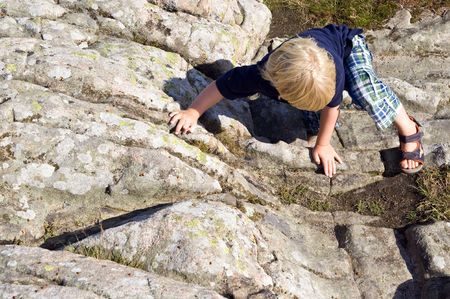1. Understanding Campsite Selection Criteria
Finding the right spot to set up camp is one of the most important skills for anyone embarking on a multi-day backpacking adventure in the United States. The perfect campsite isn’t just about a pretty view—it’s about balancing comfort, safety, and respect for nature. Let’s break down the key factors you should always consider when picking your next backcountry home.
Safety First: What to Look For
Your safety should always come first. Before unpacking your gear, scan the area for potential hazards like dead trees (widowmakers), unstable slopes, or flood-prone zones. Avoid camping directly under large branches or close to cliff edges. Make sure your site is far enough from game trails and away from areas where wildlife might frequent.
Terrain: Flatness and Comfort
The ideal campsite has flat, even ground that allows for comfortable sleeping and stable tent setup. Rocky, root-filled, or sloped spots can make for a rough night’s rest. Whenever possible, choose established sites to minimize your impact on the land.
| Terrain Type | Pros | Cons |
|---|---|---|
| Flat Soil | Comfortable sleep, easy tent pitching | Can get muddy if it rains |
| Grass/Meadow | Softer surface, scenic views | More bugs, fragile ecosystem—use only if established site |
| Forest Floor | Natural insulation, wind protection | Pine needles can be slippery; look out for falling branches |
Proximity to Water: How Close is Too Close?
Access to water is crucial for drinking, cooking, and cleaning. However, setting up too close increases the risk of flooding and disturbs wildlife habitats. In line with Leave No Trace (LNT) principles and U.S. backcountry etiquette, camp at least 200 feet (about 70 adult paces) from lakes, streams, and rivers.
Leave No Trace Principles: Respect Nature
The Leave No Trace guidelines are essential for preserving America’s wild spaces. Stick to established campsites whenever possible to reduce impact on vegetation and soil. Always pack out all trash—including food scraps—and minimize campfire use unless it’s permitted and safe. By following these practices, you help keep the wilderness pristine for future adventurers.
Quick Reference: Campsite Selection Checklist
| Criteria | Why It Matters |
|---|---|
| Safe Distance from Hazards | Avoids injury from falling branches or floods |
| Flat & Durable Surface | Makes sleeping comfortable and protects fragile environments |
| Away from Water Sources (200 ft) | Protects water quality and wildlife habitat |
| Established Site Use | Minimizes new environmental impact |
| No Trash Left Behind | Keeps campsite clean for others and wildlife safe |
2. Navigating Regulations and Permits
Before you set out on your multi-day backpacking adventure, its crucial to get familiar with the rules and permits required for camping in the backcountry—especially on public lands across the United States. Each national park, national forest, or Bureau of Land Management (BLM) area may have its own set of regulations to protect both you and the environment. Here’s how you can make sure youre doing everything by the book:
Researching Backcountry Camping Rules
Start by visiting the official website for the area where you plan to hike. Most sites have a “Plan Your Visit” or “Backcountry” section with up-to-date information on:
- Designated camping zones
- Campfire restrictions
- Bear canister requirements
- Water source locations
- Seasonal closures
If you’re unsure about anything, don’t hesitate to call or email the local ranger station. Rangers are usually happy to answer questions and provide tips tailored to current conditions.
Securing Necessary Permits
Many popular wilderness areas require permits for overnight trips, especially during peak season. These permits help manage crowds and reduce environmental impact. Here’s a quick comparison of common permit systems:
Land Agency |
Permit Type |
How to Obtain |
Notes |
|---|---|---|---|
National Park Service (NPS) |
Backcountry Permit | Online reservation or walk-in at visitor center | Often limited; reserve early for popular parks like Yosemite or Grand Canyon. |
U.S. Forest Service (USFS) |
Wilderness Permit | Online, mail-in, or self-issue at trailhead kiosk | Some areas require quota permits; others are first-come, first-served. |
Bureau of Land Management (BLM) |
Campsite Registration/Permit | Varies by area: online or onsite registration box | Largely self-regulated; check for any seasonal restrictions. |
The Importance of Respecting Local Regulations
Following regulations isn’t just about avoiding fines—it’s also about preserving the wilderness experience for everyone. Rules about campfire use, campsite selection, and food storage are there to prevent wildfires, protect wildlife, and keep natural spaces pristine for future generations.
- Pack It In, Pack It Out: Always carry out all trash, leftover food, and gear.
- Stay in Designated Sites: Use established campsites whenever possible to minimize your impact.
- Respect Quiet Hours: Keep noise down so everyone can enjoy the peace of nature.
A little planning goes a long way toward an unforgettable—and responsible—backpacking trip!

3. Finding the Ideal Spot in the Wild
Picking a great campsite is one of the most important skills for multi-day backpacking trips in the U.S. The right spot can mean a safe, comfortable night—and even a better view to wake up to! Here’s how to find that perfect patch of ground and what to watch out for in American wilderness areas.
Tips for Identifying Level Ground
- Look for flat, even terrain: Sleeping on a slope isn’t fun—your sleeping bag will slide, and you might wake up sore. Check by lying down or using your trekking pole as a level.
- Avoid depressions or gullies: These low spots can turn into puddles if it rains overnight, especially in places like the Pacific Northwest or Appalachians.
Natural Windbreaks and Shade
- Use trees or large boulders: In windy regions like the Rockies or Sierras, set up camp near natural windbreaks. This helps shield your tent and makes cooking easier.
- Plan for shade: In hot climates (think Grand Canyon or Utah deserts), afternoon shade is key. Look for stands of trees, canyon walls, or big rocks that cast long shadows later in the day.
Quick Guide: Picking Your Campsite Features
| Feature | What to Look For | Avoid |
|---|---|---|
| Level Ground | Flat, hard-packed soil; free of rocks and roots | Dips, hillsides, loose gravel |
| Windbreaks | Trees, bushes, big rocks on windward side | Exposed ridges or open fields |
| Shade | Trees with leafy canopy; east-facing slopes for morning sun but afternoon shade | Bare ground in direct sun all day |
| Scenic Views | Lakeshores, mountain vistas, meadows with wildflowers | Campsites too close to cliffs (for safety) |
| Hazards (unique to U.S.) | Away from animal trails and water sources; not under dead branches (“widowmakers”) | Beneath dead trees/branches; too close to water (flood risk & wildlife) |
Avoiding Potential Hazards Unique to American Landscapes
- Bears & Wildlife: Especially in areas like Yellowstone or the Sierra Nevada, don’t camp right by water sources—wildlife use these paths. Store food in bear-proof containers and use designated bear hangs if available.
- “Widowmakers”: Always look up before setting your tent! Avoid camping under dead trees or large branches that could fall in a storm.
- Flash Floods: In desert areas such as Utah’s slot canyons, flash floods are real. Never camp in dry washes—even if they look safe and dry at the moment.
- Poisons Plants & Bugs: Watch for poison ivy/oak/sumac in the East and South. Also be cautious of fire ant mounds in the Southeast and scorpions/spiders in the Southwest.
- Landslide & Avalanche Zones: In mountainous regions, avoid steep slopes with loose rocks or snowfields—these can become dangerous quickly.
The Takeaway: Choose Wisely!
The best campsites are found—not made. Take a few extra minutes when you arrive to look around and pick the safest, most comfortable spot you can find. Your back (and your sense of adventure) will thank you!
4. Evaluating Water Sources and Environmental Impact
Finding Reliable Water Sources
When you’re choosing a campsite for your multi-day backpacking trip, access to water is key. In the American backcountry, not all water sources are created equal. Look for clear, flowing streams or rivers instead of stagnant ponds or small puddles. Avoid camping too close to the water—at least 200 feet away—to protect delicate riparian areas and wildlife habitats.
Types of Water Sources
| Water Source | Reliability | Considerations |
|---|---|---|
| Flowing Stream/River | High (if not seasonal) | Best option; check for upstream contamination |
| Lake/Pond | Medium | Stagnant water may have more bacteria/algae |
| Snow/Ice Melt | Seasonal | Takes time and fuel to melt; only in early season/high elevations |
| Springs/Seeps | Variable | Usually clean but can dry up late in season |
Practicing Proper Sanitation in the Backcountry
Keeping both yourself and the wilderness clean is crucial for your health and the environment’s well-being. Always treat or filter your water before drinking—common methods include boiling, using a pump filter, or chemical treatments like iodine or chlorine dioxide tablets.
Backcountry Sanitation Tips
- Bury human waste: Dig a “cathole” 6-8 inches deep at least 200 feet from water, trails, and campsites.
- Packing out toilet paper: Bring resealable bags to pack out used toilet paper and hygiene products.
- Dishes and bathing: Use biodegradable soap sparingly and wash dishes or yourself at least 200 feet from any water source.
- No trace left behind: Scatter strained dishwater far from camp and waterways.
Minimizing Your Ecological Footprint
The goal is to leave the wilderness better than you found it. Stick to established campsites when possible to reduce impact on vegetation. Avoid building new fire rings; use a camp stove for cooking. Remember these key Leave No Trace principles while selecting and using your campsite:
| Action | How It Helps the Environment |
|---|---|
| Select durable surfaces (rock, gravel, dry grass) | Prevents soil erosion and damage to plants |
| Avoid disturbing wildlife and plants | Keeps natural habitats intact for future visitors and animals |
| Packing out all trash—including food scraps | Keeps wildlife healthy and prevents pollution of natural spaces |
| Use established campsites/trails when available | Concentrates impact in already-disturbed areas instead of spreading it further |
Your actions matter!
The choices you make in camp—from where you get your water to how you dispose of waste—help ensure America’s wild places stay beautiful and accessible for generations of backpackers to come.
5. Prioritizing Comfort, Privacy, and Experience
Finding the Right Balance for Your Group
When youre out on a multi-day backpacking trip in the American wilderness, picking the right campsite goes beyond just finding a flat spot to sleep. It’s about balancing your group’s needs, your own comfort, and creating that classic outdoor experience you’ll remember. Here’s how you can make it all work:
Consider Everyone’s Comfort
Start by checking in with your group. Some folks may want a soft patch of ground for their tent or need easy access to water. Others might be light sleepers who prefer sites away from busy trails or rivers where wildlife is active at night.
| Comfort Factor | Why It Matters | Tips |
|---|---|---|
| Tent Space | Ensures everyone has room to set up their shelter comfortably. | Look for wide, flat areas with minimal rocks and roots. |
| Shelter from Wind/Weather | Keeps you warm and dry during storms or chilly nights. | Pick spots near natural windbreaks like trees or boulders. |
| Proximity to Water | Makes cooking and cleaning easier but watch out for bugs and flooding. | Camp at least 200 feet from lakes and streams as recommended by Leave No Trace principles. |
| Sunlight/Shade | Affects warmth in the morning and coolness in the afternoon. | Think about when you want sun or shade, especially during summer trips. |
The Importance of Privacy in the Backcountry
No one likes waking up to strangers walking through camp or hearing another group’s campfire stories late at night. Pick a site that gives your group some breathing room—ideally tucked away from main trails and popular gathering spots. In popular U.S. parks, look for established campsites marked on maps or seek out less obvious clearings that aren’t damaging to the environment.
Privacy Tips:
- Avoid camping right next to other groups if possible.
- If solitude is important, hike a little farther off the main route (but always stay within legal camping zones).
- Use natural features like trees or terrain to create a sense of seclusion.
Cherishing the Classic Wilderness Experience
The best part of backpacking in America is soaking up those unforgettable wild moments—like sipping coffee while watching a sunrise over distant mountains or listening to coyotes howl after dark. When picking your site, think about what experiences matter most: dramatic views, quiet surroundings, starry skies, or maybe even a spot near an iconic feature like a river bend or alpine meadow. Just remember to respect nature and keep sites pristine for those who come after you.
Balancing Needs: Quick Checklist
- Group Size: Is there space for everyone?
- Personal Preferences: Does anyone have special needs (shade, proximity to water)?
- Experience Goals: What do you want to see and feel during your stay?
- Sustainability: Are you minimizing your impact on the land?


